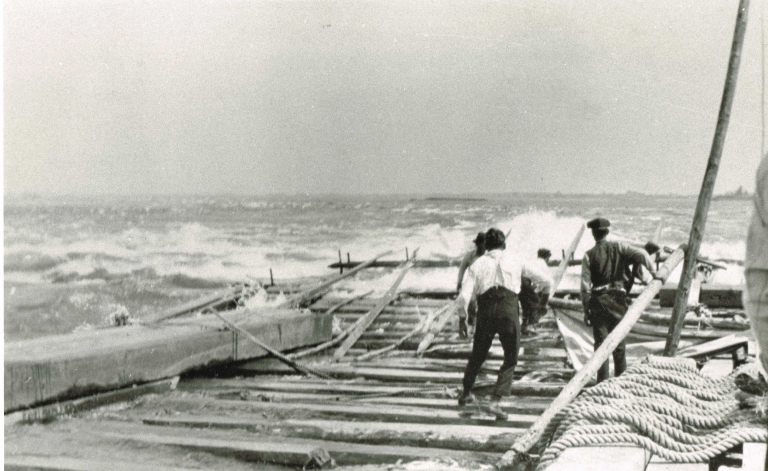From the beginning of the 19th century and until 1911, many men got the urge to engage in the risky business activity of transporting wood down the St. Lawrence River. During the winter, the lumberjacks cut down trees, crudely squared off the wood with an axe and transported it on the ice to the shores of a lake or river. In the spring, workers made cages to float the wood down the river in a venture peppered with obstacles of all kinds.
The journey from Kingston to Prescott—a distance of 100 kilometres—proceeded in rather calm waters. Then "les cageux", who guided huge wooden rafts, encountered the Rapides des Galops and the Rapides Plats, before reaching Long-Sault and then crossing Lac Saint-François. And finally, they came across other rapids, and particularly, at Coteau-du-Lac, before venturing along Lac Saint-Louis toward the Lachine Rapids.
A difficult technique
Upon reaching the village of Lachine, the foreman gave orders to divide the cages into smaller rafts in order to better brave such much dreaded waters as the Lachine Rapids. Aimé Guérin, one of the most well renowned of the master "cageux", headed the team of men—and Mohawks, in particular—for the Calvin Cook & Counter company. He made 25 trips annually during his long career spread out over 50 years in the rapids of the St. Lawrence River.

